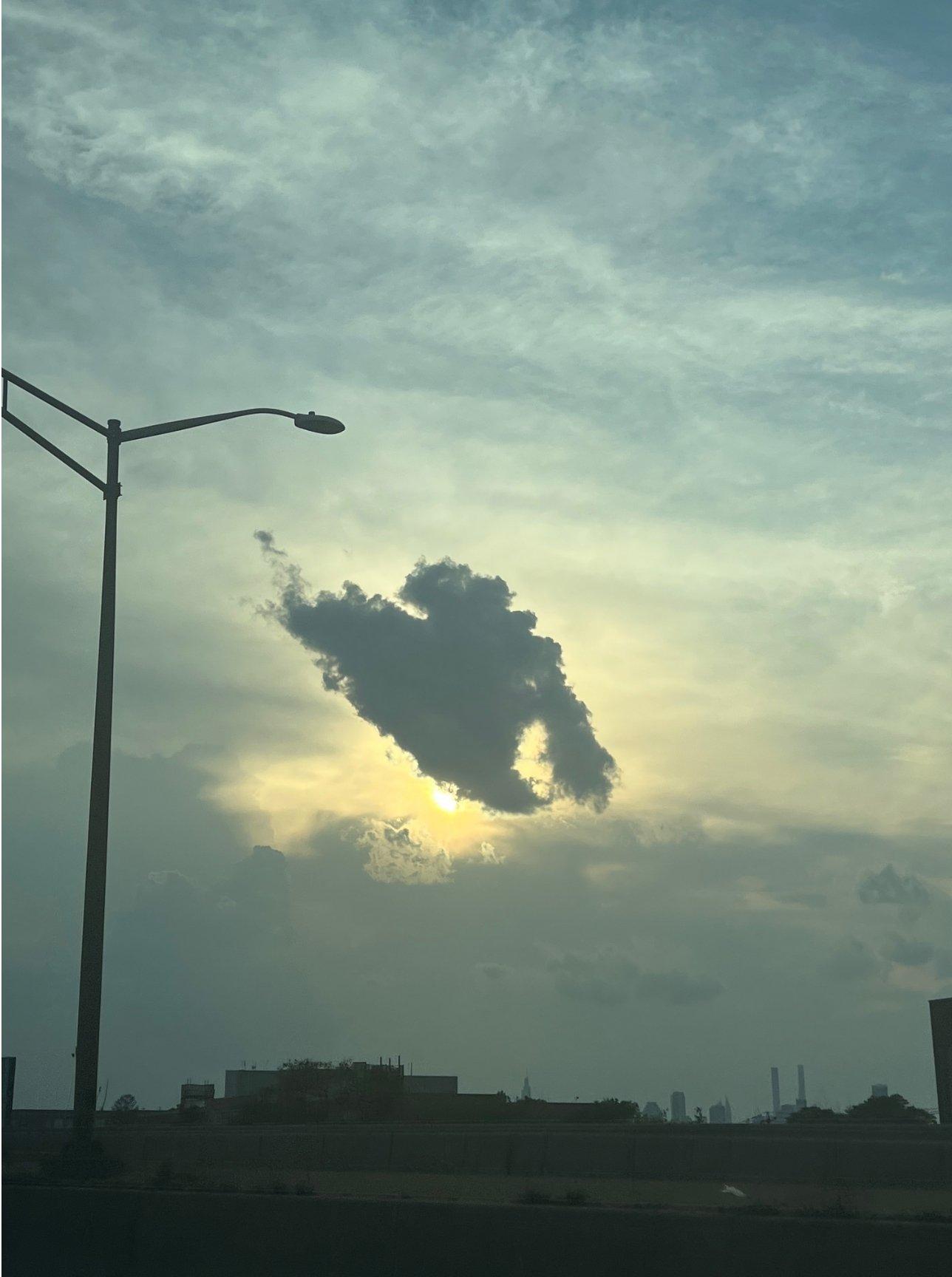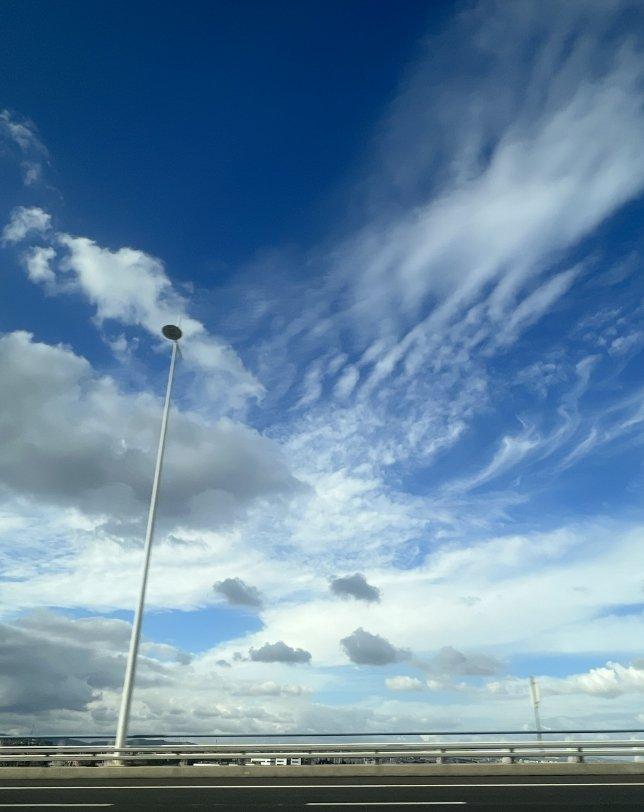CLOUDSTRUCK
Why there's joy in aimless observation

Words
LAURA BANNISTER
In the car-park outside Lisbon airport, eight of us jammed into a stranger’s van. One of my thighs was pressed up against one of B’s thighs, and the other was pressed up against the cold steel of the door. As we began the hour-long drive to Setúbal, where we were expected at C’s wedding, I lay my cheek against the window, leaving smudges on the glass. Its laminate film turned the whole sky green.
I was sleep deprived and mildly hungover, which happens to be the ideal state for a prolonged stretch of cloud watching: brain distant, body muted, ready to surrender. The clouds over Lisbon were aware of my soporific state, arranging themselves to better serve it. The closest ones – low-hanging, compact, cumulus – were outlined from behind by white-hot sunlight. They dangled from the heavens like pendants on a nursery mobile, gently nudging me to sleep.
As we drove along Ponte Vasco Da Gama, along the Sea of Straw, I sent photos of Lisbon’s layered clouds to an Instagram fan club named Cloudier Schiffer. Another writer friend, D, invited me a few years ago. Cloudier Schiffer is an at-capacity, private group chat for people who love clouds, like I do: an endless stream of photographs that flirt with the divine. (Increasingly, these are intermingled with footage of AI-generated forms.) D shares two iPhone shots of “some very fine whispers in Hackney'' that look like absent-minded watercolours. They are muddy white strings, trailing across the blue. M, an artist, posts a trio of clouds she’s seen lately, including some speckled shapes she calls “popcorn guys.” When I search “cloud” on my camera roll, 5,185 images appear. I scroll through floccus clumps spread over sky like clotted jam; masses propelling upward with the force of torpedoes; impressionistic paint daubs. In my notes app, I obsessively catalog silhouettes of furling aerosol. They remind me of God, even though I no longer believe in her. Cataloguing clouds is a means to eschew constant writer’s block, to force myself to notice. It is a way of being in the world. It is a kind of prayer.
 Clouds in New York at the intersection of Broadway and Lafayette |  Layered clouds on the drive from Lisbon to Setúbal |
Founded in 2005, the Cloud Appreciation Society is the biggest club of its kind, with around 60,000 paying members from 120 countries. It began in much the same way as I suppose Cloudier Schiffer did, with an amateur meteorologist finding poetic, ephemeral pockets in nature, hoping others noticed too. Founder Gavin Pretor-Pinney, who is based between London and Somerset, is an avid cloudspotter, and a believer in the importance of aimless observation. When in Rome in the early 2000s, taking a break from the burnout of publishing a magazine, Pretor-Pinney found himself missing the crowded, cloudy skies of England. Rome was sunnier climes, all clear and blue, but very much cloud free: absent of the illusions formed when compacted, tiny water droplets reflect light in all directions. He found clouds only in frescoes, whose voluptuous forms, he told The New York Times, resembled “the sofas of the saints.” At a one-day conference for his society’s 10th anniversary, full of ordinary people who watch the sky, someone covered Joni Mitchell’s Both Sides, Now to close the event. She sang of rows and flows of angel's air, of feather canyons and ice cream castles in the air. “In life’s illusions I recall, I really don’t know life at all.” Many attendees wept openly as she sang, coming apart without warning, like rain.
When we gaze upward at clouds, which are abstract things, our field of vision is defined by what we know: sexuality and desire, anxiety and boredom, metaphors of bodies. (The word cloud itself derives from the Old English words clud and clod, referring to a hill or a mass of stone. Around the 13th century, the nouns became stand-ins for heavy rain clouds.) We are always making a cloud into something else—a butt, a face, a mountain—shoehorning the foggy mass of moisture inside a shape we better understand. In this way, the sky itself feels closer to us, more personal and precious. No one sees a cloud precisely the way we do, and in a few minutes, it will become something else.
After C’s the wedding, I am back in New York, where the trees are turning yellow. I take an afternoon walk on a Sunday to buy groceries; above me, jostling cartoon clouds do an impression of The Simpsons opening credits. I build icons inside the perfect puffs of white, and watch them vanish in the wind. If stargazing anchors us in the earth’s orbit, cloud-gazing has the opposite effect: I become untethered to any one specific place, I am alive and I am looking and that’s enough. A stranger on Quora, from Noida in India, likens clouds to roaming cowboys, which I like. “Clouds have no families,” she writes. “No responsibility. Born wanderers. Die wanderers. They absorb every vapour (pain) in themselves and cry them out in the form of rain only when they're full to their brim.”
Laura Bannister is a writer living in New York. She is the editor of Museum Books.